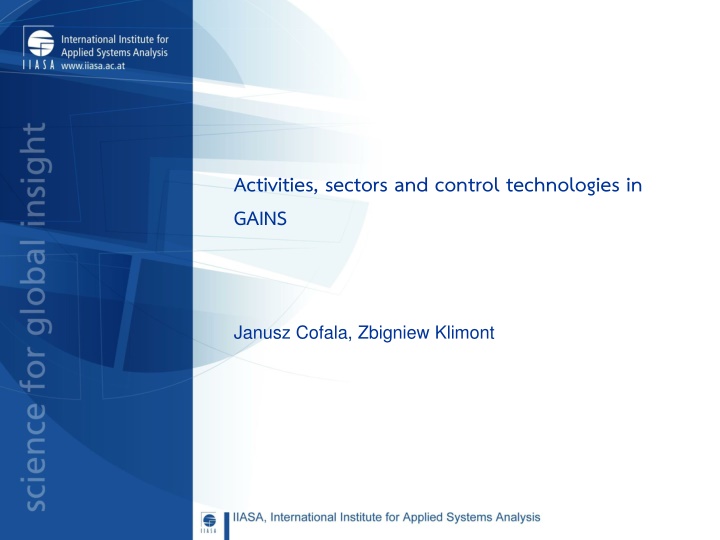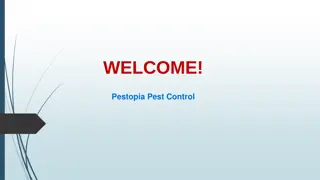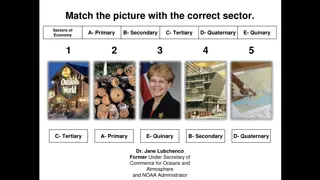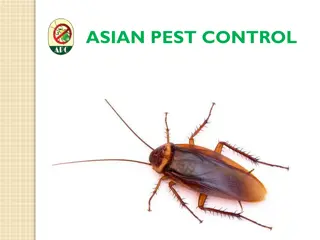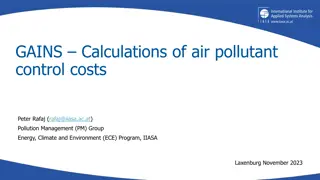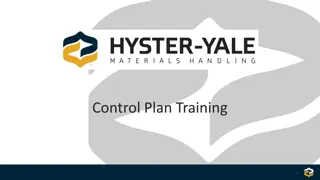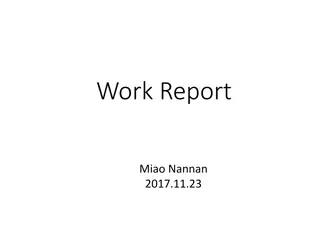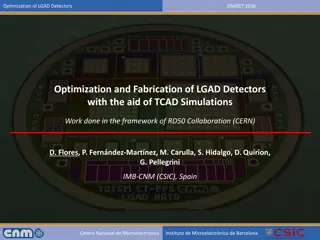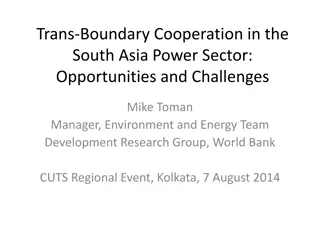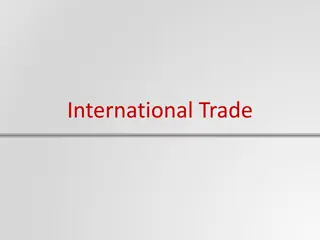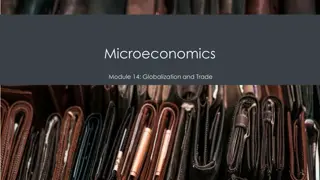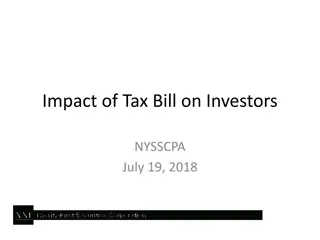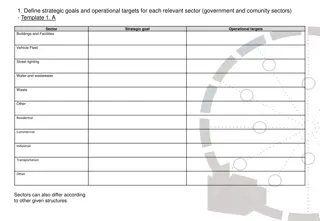Activities, Sectors, and Control Technologies in GAINS Research
The GAINS research by Janusz Cofala and Zbigniew Klimont focuses on aggregation criteria for emission sources, macroeconomic parameters such as population and GDP, aggregation of energy-related sources, transport sources, and process sources. It also covers specific VOC processes/sources like solvent use in various industries. The research emphasizes the importance of source identification, forecasting activity levels, control technologies, and data availability for effective emission management.
Download Presentation

Please find below an Image/Link to download the presentation.
The content on the website is provided AS IS for your information and personal use only. It may not be sold, licensed, or shared on other websites without obtaining consent from the author.If you encounter any issues during the download, it is possible that the publisher has removed the file from their server.
You are allowed to download the files provided on this website for personal or commercial use, subject to the condition that they are used lawfully. All files are the property of their respective owners.
The content on the website is provided AS IS for your information and personal use only. It may not be sold, licensed, or shared on other websites without obtaining consent from the author.
E N D
Presentation Transcript
Activities, sectors and control technologies in GAINS Janusz Cofala, Zbigniew Klimont
Criteria for aggregation of emission sources GAINS applies five criteria: Importance of a source (>0.5 percent in a country) Possibility for using uniform activity rates and emission factors Possibility of establishing plausible forecasts of future activity levels Availability and applicability of similar control technologies Availability of relevant data
Macroeconomic parameters Population GDP (in MEX and in PPP Value added by major sector: Industry Agriculture Transport Other services Major sectors divided into sub-sectors (e.g., industrial branches like Iron and Steel, Chemicals, Mineral Products etc.) All macro values in constant prices (currently 2005)
Aggregation of energy- related sources Primary sectors: Power plants Other energy production and conversion Industry Domestic Transport Non-energy use Further divided into secondary sectors Fuel categories: Coal Oil Gas Biomass Renewables Nuclear Electricity Heat Different types and grades included
Aggregation of transport sources Road transport Cars, light-duty trucks Heavy-duty trucks, buses Motorcycles and mopeds (2-stroke, 4-stroke) Non-road mobile sources Rail, Air, Inland waterways National sea traffic and national fishing Mobile machines construction and industry, agriculture Other (households, gardening, forestry, military) For each source vehicle numbers and fuel consumption assessed. For road transport also vehicle-kilometers
Aggregation of process sources Storage and handling of bulk products: Coal Agricultural products Metal ores Fertilizers Other Construction activities Waste treatment and disposal Production of raw materials: Steel Aluminum Other metals Cement Glass Oil refining Fertilizers
Specific VOC processes/sources Solvent use: Dry cleaning and degreasing Decorative paints Industrial paint application Vehicle manufacturing and repair Printing Manufacture of paints, inks and glue Preservation of wood Chemical industry Tyre production Pharmaceutical industry Domestic use of solvents Oil production and use: Off- and on- shore exploration Refineries Storage of crude and products Distribution of products (e.g., gasoline stations) Mobile: Evaporative emissions from gasoline engines Two-stroke vehicles
Emission categories agriculture and other NH3 sources Dairy cows (liquid and solid waste systems) Buffalos Camels Other cattle (liquid and solid waste systems) Fertilizer use (Urea, Other N-fertilizers) Pigs (liquid and solid waste systems) Fertilizer production Waste treatment and disposal Laying hens Residential combustion Other poultry Industrial combustion Sheep and goats Transport Fur animals Other Horses
Main emission control options for SO2 180 options considered in RAINS Use of low sulfur coal Use of low sulfur heavy fuel oil Use of low sulfur diesel (3 stages) Use of low sulfur gasoline In- furnace control Flue gas desulfurization Advanced flue gas desulfurization Process emissions controls (3 stages) 0.6% S 0.6% S 0.2 - 0.001% S 0.001% S 60% 85 - 95% 98% 50 80 %
Main emission control options for NOx 400 options considered in RAINS For stationary sources Combustion modifications SNCR SCR For mobile sources Road: Euro stages Non-road: Euro equivalents Seagoing ships: Combustion modification SCR 20 - 65 % 70 % 80 % 30 - 98 % 30 98 % 50 % 85 %
Main emission control options for PM 850 options considered in GAINS For stationary sources Cyclones, ESPs, fabric filters, wet scrubbers, Improved and new boilers and stoves in the residential and commercial sectors Good practices For mobile sources Same as for NOx
Major abatement measures for VOC 500 options considered in GAINS Basic emission management techniques: good housekeeping, regular maintenance programs, process modification Solvent substitution End-of-pipe techniques: thermal and catalytic incineration, carbon adsorption, etc. Combination of these measures
Major abatement measures for NH3 110 options considered in GAINS Low nitrogen feed (dietary changes): Biofiltration (air purification) Housing adaptation: low emission housing Covered outdoor storage of manure Low ammonia application techniques: efficient application of manure Incineration of poultry manure Urea substitution
